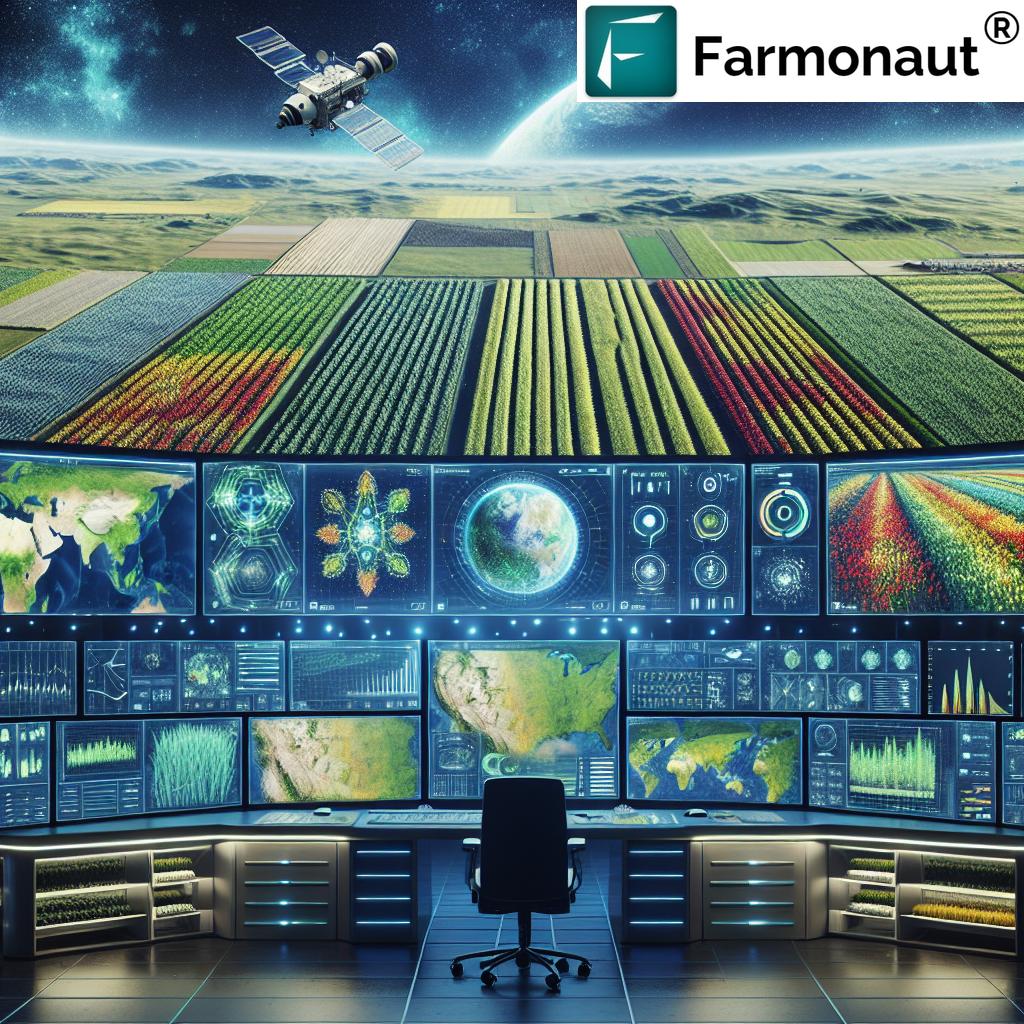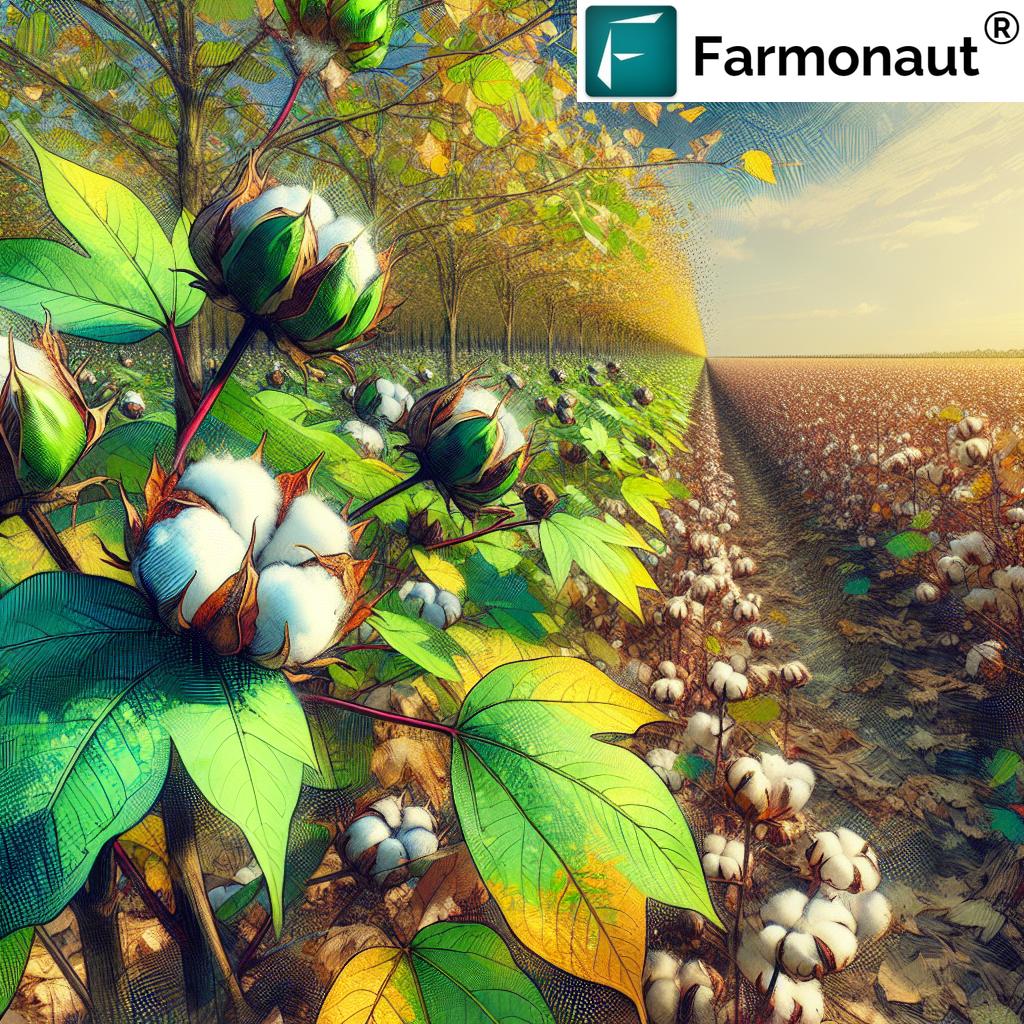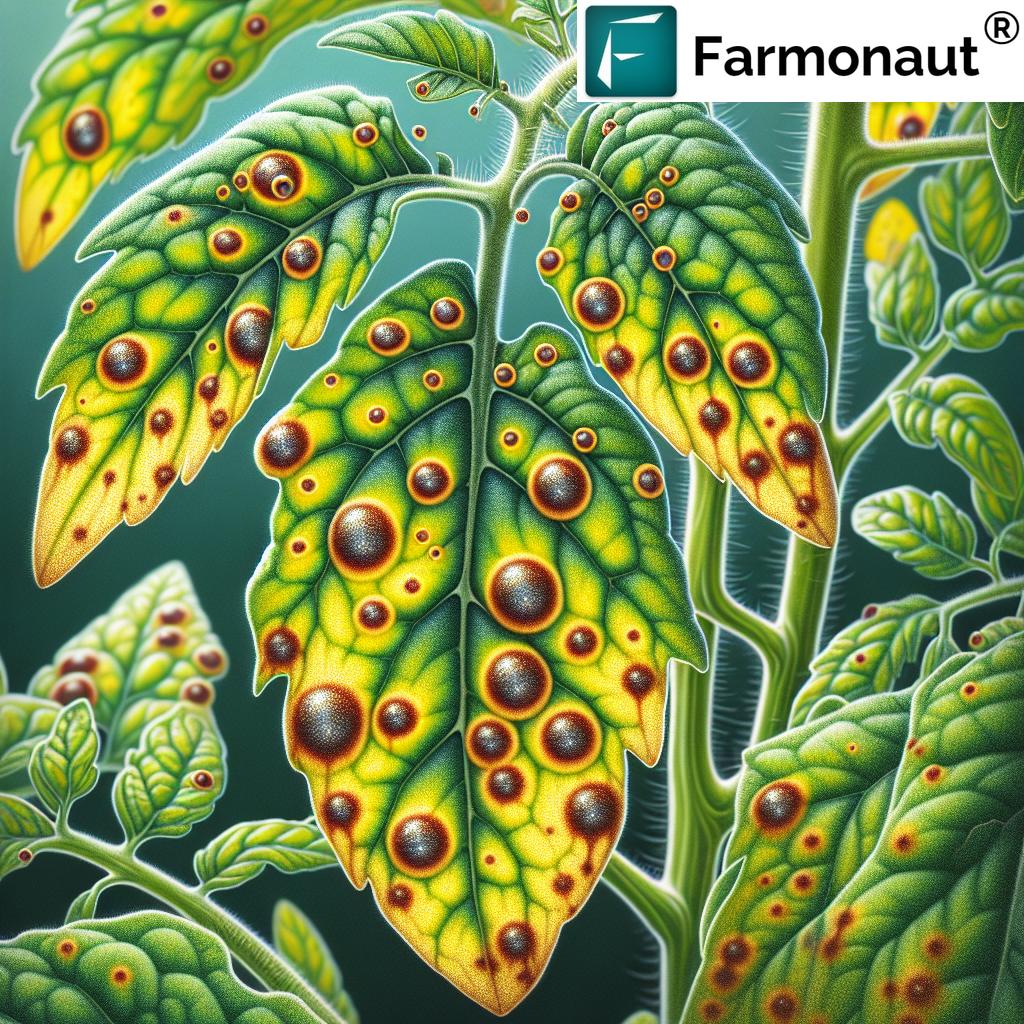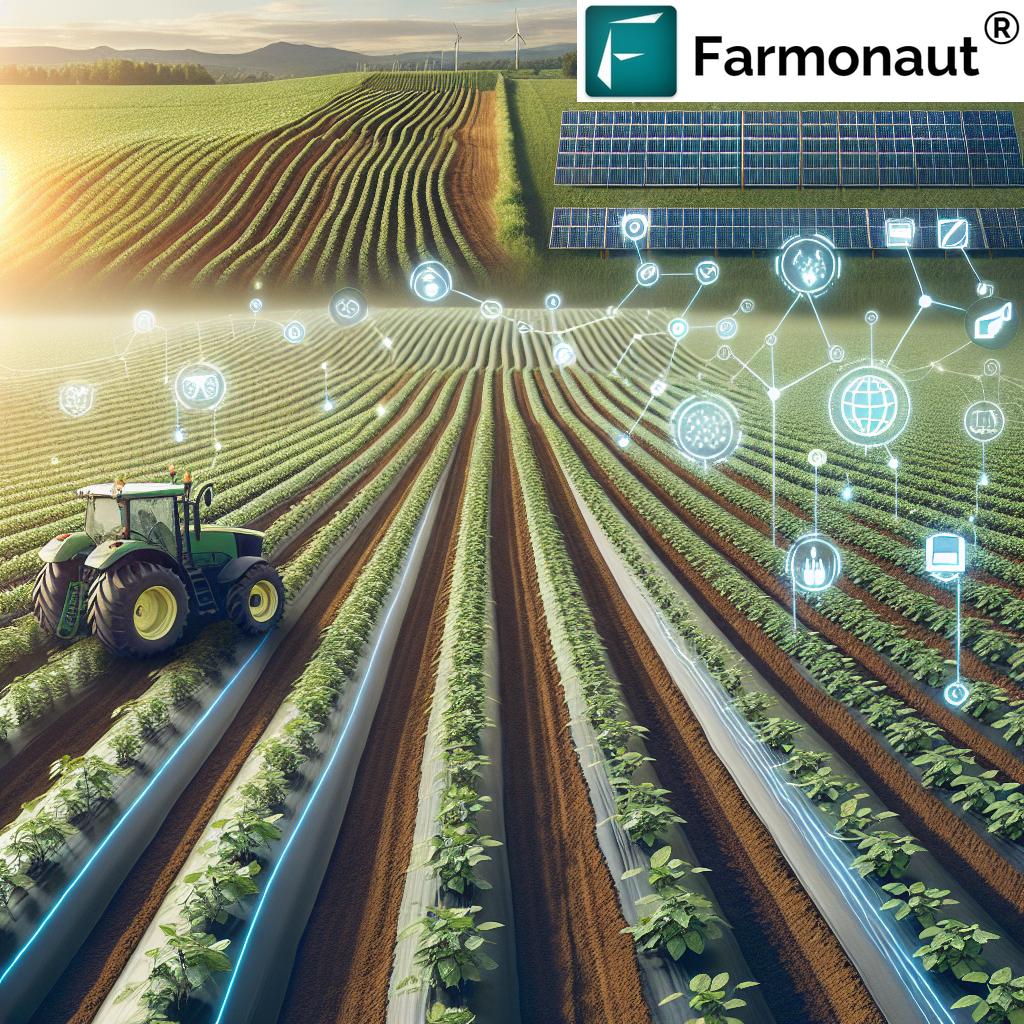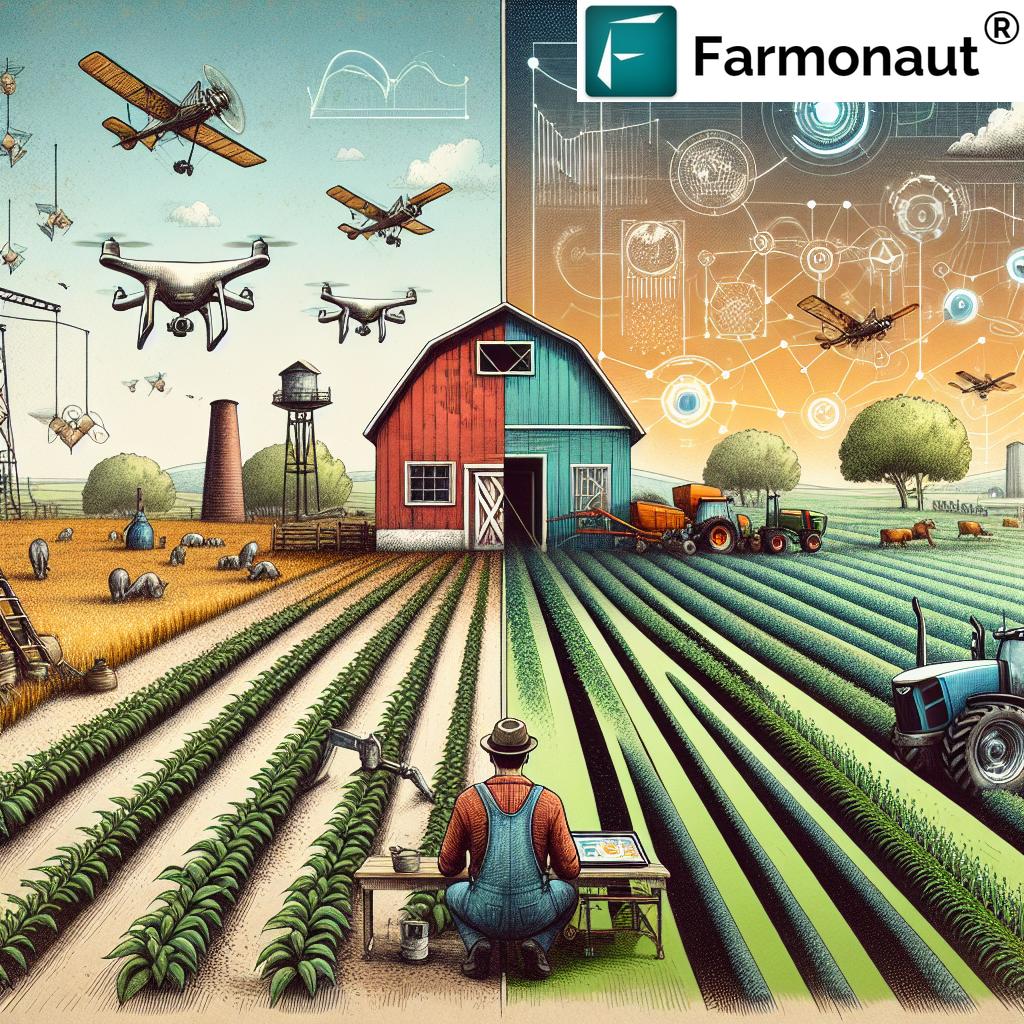Table of Contents
- Modern Farming Methods: Transforming Agriculture in 2025
- The Evolution of Farming: Why Modern Methods are Essential
- What Are Modern Farming Methods?
- Key Modern Farming Method 2025: Driving Agricultural Transformation
- Comparative Impact Table: Farming Technology in 2025
- How Technology is Transforming Farming: Detailed Insights
- Sustainability and Soil Health Management
- Challenges and the Path Forward
- How We at Farmonaut Enable Modern Method of Agriculture
- Frequently Asked Questions: Modern Farming Methods 2025
- Conclusion: 2025 & Beyond – Cultivating the Future
“In 2025, precision agriculture can increase crop yields by up to 30% using advanced data analytics and satellite imagery.”
“Over 60% of farms worldwide are expected to adopt AI-driven decision tools for sustainable agriculture by 2025.”
Modern Farming Method 2025: Boost Yields with Tech
Meta Description: Modern farming method 2025 harnesses technology, precision, and data to transform agriculture—discover techniques that boost yields, efficiency, and sustainability.
Modern Farming Methods: Transforming Agriculture in 2025
The method of modern farming is revolutionizing how food is produced across the globe. Agriculture, as the backbone of civilization, has undergone a tremendous evolution over centuries—reshaping to meet the needs of a global population that continues to surge and intensify. In 2025, these modern methods are a fusion of powerful technology, scientific advancements, and sustainable agricultural practices.
The Evolution of Farming: Why Modern Methods are Essential
Across the centuries, agriculture has responded to challenges through innovation. From basic irrigation channels of ancient civilizations to today’s satellite-driven crop optimization, farming has always been vital for food security and resource management. Yet, our current era stands at a pivotal crossroads. Rapid population growth, climate change, water scarcity, and soil degradation intensify the pressure to adopt advanced, efficient, and more sustainable solutions. The modern method of farming in 2025 is about using every available tool to maximize yield, minimize waste, and ensure a safe, abundant food supply for all.
Today’s modern farming methods represent more than a simple technological upgrade. They embody a holistic blend of precision, sustainability, mechanization, and digital transformation, providing farmers with real-time data, deeper insights, and smarter tools to address both productivity and ecological balance.
What Are Modern Farming Methods? Fundamentals for 2025
So, what are modern farming method? At their core, these are innovative techniques and systems designed to:
- Improve crop yields and boost productivity
- Enhance resource efficiency (think: water, fertilizers, and energy)
- Minimize environmental impact and chemical dependency
- Support sustainable practices and long-term soil health
- Maintain the economic viability of farms amidst global challenges
Unlike traditional approaches, the modern method of agriculture leverages the integration of information technology, precision science, satellite imaging, smart sensors, data analytics, robotics, and AI to bring accurate monitoring, adaptable strategies, and sustainable outcomes.
Key Modern Farming Method 2025: Driving Agricultural Transformation
Let’s explore the fundamental pillars of the method of modern farming in 2025:
1. Precision Agriculture: Farming at the Forefront of Technology
Precision agriculture sits at the forefront of today’s transformation. By combining GPS, satellite imagery, drones, and IoT (Internet of Things) sensors, farmers can monitor soil health, moisture levels, crop status, and pest infestations in real time. These methods enable targeted application—fertilizers, water, and pesticides are applied precisely where and when needed, minimizing waste and averting environmental damage while maximizing yields.
Benefits:
- Enables variable rate application of inputs
- Improves yields and crop quality
- Reduces use of chemicals and water
- Provides immediate feedback for decision-making
2. Smart Irrigation Systems: Optimizing Water Resources
Water scarcity remains a critical concern globally. Modern farms employ smart irrigation systems, such as drip irrigation combined with automated moisture sensors and weather forecasting. This ensures crops receive adequate hydration—without excess runoff or evaporation losses—by only delivering water exactly when and where needed. Resource usage is optimized, promoting sustainability and resilience.
Key Features:
- Reduced water use by more than 30%
- Enhanced crop yields despite limited water supply
- Automated scheduling based on real-time soil data
3. Controlled Environment Agriculture (CEA): Maximizing Yield in Any Condition
CEA practices such as greenhouse farming, vertical farming, and hydroponics are becoming mainstream in 2025. These systems allow for year-round cultivation, regardless of external climate or soil conditions, using technology to provide plants with optimal light, nutrients, and environmental controls. CEA enables urban and peri-urban production, lessens dependency on natural conditions, and substantially increases productivity per square meter.
- Faster growth cycles and higher density planting
- Substantial reduction in pesticide use
- Ability to produce crops in areas previously unsuitable for farming
4. Biotechnology and Genetic Engineering: Advancement from Nature
Modern biotechnology has enabled the development of crop varieties that are more resistant to pests, diseases, drought, and extreme weather. Genetic modification is used to enhance nutritional profiles, boost yield, decrease dependency on chemical inputs, and promote sustainability by requiring fewer resources for growth.
- Disease-resistant and climate-resilient crops
- Higher nutritional value and better shelf life of produce
- Reduced agrochemical consumption—better for both consumers and the environment
5. Drones and Robotics: Automation and Precision on the Field
The adoption of drones and robotics has redefined several farm practices—from aerial field mapping, targeted crop spraying, soil assessments, to robotic planters and automated harvesters. This technology helps maximize efficiency, compensate for human labor shortages, and significantly increase precision.
- Drone surveillance improves pest/disease detection and optimized treatments
- Robotic weeders and harvesters reduce manual labor costs and increase consistency
- Time-saving and resource-efficient, especially for large-scale farms
6. Data-Driven Farming and Artificial Intelligence: The Digital Revolution
Harnessing AI and big data analytics empowers farmers with predictive tools. Decision-support systems use machine learning to analyze sensor and weather data, forecast pest outbreaks or ideal planting times, and optimize input management for improved yields and profit margins.
- AI tailors recommendations for each farm, responding to real-time conditions
- Machine vision enables rapid disease or nutrient deficiency identification
- Digital solutions increase access and cost efficiency
7. Blockchain & Traceability: Transparency from Farm to Fork
Modern farming method in 2025 is not just about growing food but also securing trust and transparency throughout the food chain. Blockchain technology ensures every stage of the supply chain is traceable, authenticating crop origins, ensuring fair trade, and reducing fraud.
- Consumers and companies can verify authenticity and environmental standards
- Digital records reduce inefficiency and mislabeling risks
Learn more about end-to-end blockchain-based traceability on our dedicated page: Farmonaut Product Traceability Solutions
Comparative Impact Table: Farming Technology in 2025
How do modern farming method technologies compare in terms of boosting crop yields, resource efficiency, and sustainability? Here’s a concise table for clarity:
| Farming Technology | Estimated Yield Increase (%) | Resource Savings (%) | Sustainability Score (1–5) |
|---|---|---|---|
| Satellite Imaging | 20–30 | 15–25 (water, fertilizers) | 5 |
| Precision Irrigation | 10–20 | 30–40 (water) | 5 |
| Drones | 10–15 | 10–20 (chemicals, labor) | 4 |
| IoT Sensors | 12–25 | 20–35 (water, inputs) | 5 |
| AI Crop Monitoring | 18–28 | 20–25 (inputs, water) | 5 |
Key takeaway: Modern technologies are essential—each provides tangible benefits for yield, sustainability, and resource conservation when adopted as part of the method of modern farming.
“In 2025, precision agriculture can increase crop yields by up to 30% using advanced data analytics and satellite imagery.”
“Over 60% of farms worldwide are expected to adopt AI-driven decision tools for sustainable agriculture by 2025.”
How Technology is Transforming Farming: Detailed Insights
Satellite Imagery & Real-Time Monitoring
Satellite monitoring—especially using multispectral imagery—enables real-time, field-scale surveillance of crop health, soil moisture, and environmental impact. These systems facilitate rapid detection of anomalies, ensuring issues are addressed before they escalate.
- Monitor NDVI and EVI values for early stress detection and optimized input application.
-
Support resource allocation in real-time.
Discover Farmonaut’s real-time crop monitoring for large-scale field analysis and informed decision-making:
Large Scale Farm Management
Artificial Intelligence & Decision Support
AI’s major impact lies in correlating diverse data streams (from sensors, climate records, drones, etc.) and generating actionable, predictive insights.
- AI-driven dashboards predict optimal planting, irrigation, and harvest periods
- Machine vision for automated pest/disease identification
Try Farmonaut’s Jeevn AI Advisory System for actionable weather forecasts, recommendations, and field advisory powered by real-time satellite analysis!
See our Android, iOS, or Web app for direct access:
IoT Sensors: Measuring Everything
Deployment of IoT sensors across farms allows for real-time measurement of everything—soil temperature, pH, electrical conductivity, moisture content, and environmental conditions. Combined with cloud-based analytics, this enables remote farm management and timely input adjustments.
Fleet & Resource Management: The Efficiency Booster
Managing tractors, combines, and equipment with digital telematics reduces operational costs and enhances resource management for machinery. Explore modern fleet optimization on our Fleet Management Product Page for detailed insights on automating agricultural logistics and resource allocation.
Insurance and Financing: Risk Mitigation through Satellite Verification
Reliable crop monitoring via satellites now underpins insurance claims and agri-loan underwriting in 2025. Read how our digital tools benefit financial providers and farmers alike: Farmonaut’s Crop Loan and Insurance Verification.
Carbon Footprinting & Environmental Monitoring
With sustainability increasingly at the agricultural forefront, precise carbon tracking is pivotal. Our Carbon Footprinting Solution enables farms and agribusinesses to reliably measure, monitor, and report emissions, unlocking new value and ensuring compliance.
Sustainability, Conservation, and Soil Health Management
Modern method of farming isn’t just about technology; it is deeply concerned with protecting natural ecosystems. Sustainable practices address long-term fertility, soil structure, and biodiversity.
- Crop rotation and intercropping build resilience, reduce dependency on chemicals, and improve nutrient cycling.
- Organic inputs (bio-fertilizers, compost) reduce synthetic fertilizer use.
- Conservation tillage and cover cropping protect soil from erosion, pests, and nutrient leaching.
- Environmental monitoring tracks carbon and biodiversity for regulatory reporting and sustainability goals.
Read more on our Carbon Footprinting and Traceability Solutions for detailed use cases.
Overcoming Challenges: Adoption, Access, and the Road Ahead
Despite the potential of modern farming method, several key challenges remain:
- High initial investment—smart machinery, IoT infrastructure, and digital platforms require upfront capital.
- Access & digital literacy gaps—rural and marginalized communities need training and support to fully benefit from digital solutions.
- Data security and privacy—with the proliferation of sensors and cloud-based systems, robust security standards become essential.
- Policy and market access—regulatory clarity and open markets are crucial for scaling new systems.
Ultimately, the evolution of the modern method of agriculture in 2025 and beyond depends on bridging technology with hands-on farmer empowerment and equitable access. Digital platforms like apps and APIs are essential for providing these services at scale.
How We at Farmonaut Enable Modern Method of Agriculture
At Farmonaut, our mission is to make satellite-driven insights and cutting-edge technology accessible and affordable for all in the realm of farming and beyond. By leveraging satellite imagery, AI, IoT, blockchain, and real-time analytics, we provide actionable intelligence that empowers farmers, businesses, and governments worldwide.
Our solutions support the core modern method of farming principles: precision, sustainable resource management, economic viability, and digital empowerment.
- Real-Time Crop, Soil, and Environmental Monitoring: Our platforms analyze multispectral satellite imagery to assess crop health (NDVI), soil conditions, and manage environmental footprint—all in one intuitive interface.
- AI-Based Advisory: Through Jeevn AI, users receive tailored strategies, weather forecasts, and best practice recommendations to optimize productivity.
- Blockchain Traceability: We ensure transparency and trust in the food value chain by enabling traceability from farm to fork.
- Fleet, Resource, and Insurance Management: Our technology streamlines logistics, fleet usage, and supports satellite-based verification for loans and crop insurance.
- Environmental Compliance: With real-time carbon tracking and conservation tools, users can meet regulatory and sustainability standards efficiently.
Whether you run a small family farm or manage agricultural operations at scale, Farmonaut’s modular platform adapts to your needs.
Explore Farmonaut’s Satellite Technology Solutions and join us in transforming agriculture for a secure, data-driven future.
Frequently Asked Questions: Modern Farming Methods 2025
What are modern farming methods?
Modern farming methods are innovative agricultural techniques that leverage technology, data, and sustainable practices to improve yields, resource efficiency, and minimize environmental impact. These methods include precision agriculture, smart irrigation, drone/robotics deployment, biotechnology, data-driven decisions, and transparency tools like blockchain.
How does precision agriculture improve productivity?
By using GPS, remote sensing, and smart sensors, precision agriculture helps farmers apply precisely the right amount of inputs (water, fertilizer, pesticides) only where and when needed, reducing waste, improving plant health, and maximizing yield.
Why is sustainability so important in 2025?
With the global population rising and climate challenges intensifying, sustainable farming practices are crucial for protecting natural resources while maintaining high crop productivity. Sustainable techniques safeguard soil, conserve water, reduce dependency on chemicals, and build resilience against unpredictable weather.
Is adoption of modern farming methods affordable for every farmer?
Adoption can require a significant initial investment, especially for machinery or digital infrastructure. However, the long-term economic and productivity benefits often outweigh the costs. Affordable solutions and modular platforms (like Farmonaut) help democratize access.
How does blockchain improve transparency?
Blockchain enables secure, tamper-proof tracking of produce, inputs, and processes through the entire supply chain. This transparency builds trust and can unlock premium markets for traceable, sustainably-produced crops.
Where can I learn more or try digital tools in farming?
Farmonaut provides free trials on its web and mobile apps for hands-on experience with satellite monitoring, real-time analytics, and more.
Conclusion: 2025 & Beyond – Cultivating the Future
As we look to 2025 and beyond, modern farming method is no longer optional—it is essential for ensuring food security, environmental stewardship, and lasting economic value. By embracing technology and innovative practices, the agricultural industry is poised for a transformation that will support our civilization for generations.
- Enhanced yields, greater efficiency, and profitability through targeted, data-driven methods
- Resource conservation that protects ecosystems and future productivity
- Climate resilience and readiness for an unpredictable future
The adoption of the modern method of farming empowers farmers, sustains communities, and fosters the balance between productivity and ecological health.
Transform your agricultural operations. Whether you’re an individual farmer, large agribusiness, or government agency, explore Farmonaut’s tools for a smarter, more sustainable farming future.





